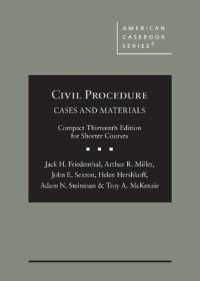- ホーム
- > 洋書
- > 英文書
- > Science / Mathematics
Full Description
This English translation of Karatsuba's Basic Analytic Number Theory follows closely the second Russian edition, published in Moscow in 1983. Analytic number theory is that part of number theory in which, besides purely number theoretic arguments, the methods of mathematical analysis play an essential role.






